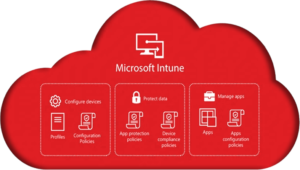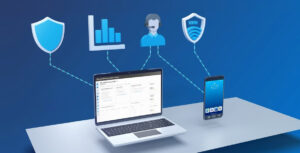This article will explore a few of the new features in CM 2012 R2. For a complete list, see this TechNet article: https://technet.microsoft.com/en-us/library/dn236351.aspx. Keep in mind that this article was written before the release of R2, so some things may change with the final product.
Client
To start, CM 2012 R2 will feature a client installation parameter – /ExecludeFeatures. While all of the options for this parameter have not been released, the most important one is “ClientUI”. When this option is specified, Software Center will not be present on the machine. This allows an administrator to confine all of the functions of Software Center totally into a company portal (such as Flexera’s App Portal), and not leave any other option on the machine.
Next, administrators will now be able to define VPN and Wi-Fi profiles from SCCM. This feature is restricted to only iOS, Android, Windows 8.1, and Windows 8.1 RT operating systems. This allows for more management of these devices, especially iOS and Android, which cannot be joined to Active Directory.
Task Sequences
There are a whole host of new features for task sequences. The first, and most obvious, is support for Windows 8.1 and Windows Server 2012 R2. With this upgrade, you will be able deploy these operating systems, as well as manage them.
Next, administrators will be able to deploy virtual hard disks from inside the CM 2012 console. This allows administrators to create the disk from a task sequence without having to image the disk after the virtual machine is already deployed. Virtual Machine Manager is required to use this feature.
PowerShell scripts are also supported natively inside of your tasks sequence. There is a new line option to run these, similar to the “Run Command Line” option in current versions of Configuration Manager.
Content Management
Content management deals with distribution points. First, administrators can now cancel an in-progress distribution. This option will appear under the “Content Status” section of the Monitoring node. This is especially helpful if you distribute large packages, applications, or images. Now, you can cancel a distribution in progress if you realize you made a mistake.
Another feature is one Microsoft is calling “Pull-distribution points”. This feature allows the administrator to basically set up priority distribution points. This means that now an administrator can assign lower priority applications to other distribution points, as well as your primary distribution points. The client will try to install the application from the lower-priority DP before using a higher-priority DP. This allows you to keep your main OS images and main software programs (such as Office) on a high priority DP, while keeping lesser-used applications on lower priority DP’s, ensuring that they will not use up valuable bandwidth on an application that is not accessed very often. If the lower priority DP is not available, the client will install from a higher-priority DP.
A feature that I know I will be using is a new built-in report that will tell you distribution point utilization. This report will be called “Distribution point usage summary”, and will tell you what DP(s) are being used the most. It will tell you how many clients access the DP, and how much data is transferred from the DP’s to the clients.
Summary
This post only highlights some of the feature changes/updates for the upcoming release of Configuration Manager. I encourage anyone thinking of upgrading to visit the TechNet article linked above and see how CM 2012 R2 could benefit your environment.
I definitely encourage anyone running CM 2012 to upgrade to R2. When I upgraded my test environment, it only took less than 30 minutes to perform the upgrade. Before performing the upgrade, you must install the Windows 8.1/Server 2012 R2 Windows Automated Installation Kit. When you install this, it will force you to uninstall the Windows 8/Server 2012 AIK. You need the “Deployment Tools”, “Windows Preinstallation Environment (Windows PE)”, and “User State Migration Tool (USMT” options.
Come back sometime after the October 18 release date for a detailed article on upgrading CM 2012 SP1 to CM 2012 R2.





